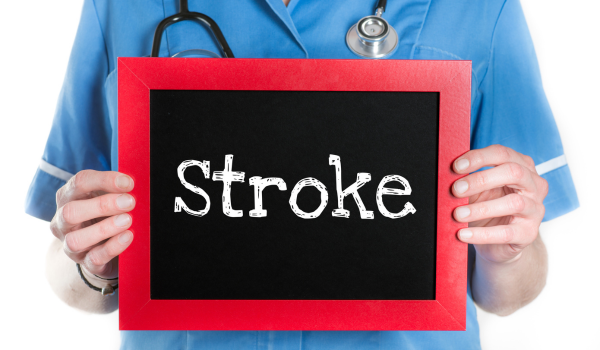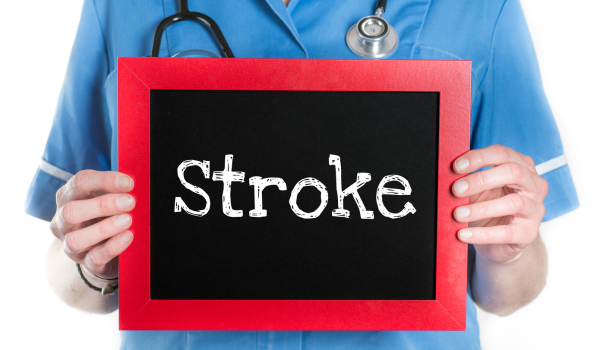.png)
High blood pressure, also known as hypertension, is a leading cause of stroke, one of the most serious medical conditions. Uncontrolled hypertension can damage the blood vessels and increase the risk of stroke. Understanding the link between high blood pressure and stroke is essential for effective prevention and treatment. This article explores how high blood pressure contributes to stroke and offers practical strategies for controlling hypertension to reduce the risk.
The Role of High Blood Pressure in Stroke
High blood pressure plays a critical role in the development of both ischemic and hemorrhagic strokes. The damage caused by elevated blood pressure can lead to the rupture of blood vessels or the formation of blood clots, both of which are harmful to the brain.
How High Blood Pressure Damages Blood Vessels
When blood pressure is consistently high, it puts extra strain on the blood vessels, causing them to become stiff and damaged over time. This can lead to the development of small tears in the blood vessels, making it easier for clots to form. These clots can travel to the brain, blocking blood flow and causing an ischemic stroke.
The Impact on the Heart and Brain
Hypertension also increases the workload of the heart, which can lead to heart disease. The heart’s inability to pump blood effectively can cause further strain on the arteries, increasing the risk of stroke. Chronic hypertension can also cause the arteries in the brain to narrow, making them more susceptible to rupture and hemorrhagic stroke.
The Types of Stroke Linked to High Blood Pressure
Understanding the types of strokes associated with high blood pressure can help in recognizing the symptoms early and seeking timely medical intervention.
Ischemic Stroke
An ischemic stroke occurs when a blood clot blocks the flow of blood to the brain. High blood pressure can lead to the formation of blood clots that block the arteries, causing ischemic strokes. This type of stroke is the most common and accounts for around 87% of all strokes.
Hemorrhagic Stroke
A hemorrhagic stroke occurs when a blood vessel in the brain bursts, causing bleeding. High blood pressure weakens the blood vessels, making them more likely to rupture. This type of stroke is less common but often more fatal due to the brain's inability to cope with excessive bleeding.
How to Control High Blood Pressure
Controlling high blood pressure is the most effective way to prevent strokes. By making lifestyle changes, using medications, and monitoring blood pressure regularly, you can significantly reduce your risk of a stroke.
Lifestyle Changes for Blood Pressure Control
-
Healthy Diet: Eating a diet low in salt and rich in fruits, vegetables, and whole grains can help manage blood pressure. The DASH (Dietary Approaches to Stop Hypertension) diet is highly recommended for those at risk of high blood pressure.
-
Exercise Regularly: Engaging in regular physical activity, such as walking, swimming, or cycling, can help lower blood pressure and improve heart health. Aim for at least 30 minutes of moderate-intensity exercise most days of the week.
-
Maintain a Healthy Weight: Overweight and obesity are major contributors to high blood pressure. Achieving and maintaining a healthy weight can significantly reduce your blood pressure levels.
-
Limit Alcohol and Tobacco Use: Drinking alcohol excessively and smoking both increase blood pressure. Reducing alcohol consumption and quitting smoking are key steps toward controlling hypertension.
-
Stress Management: Chronic stress is linked to high blood pressure. Practicing relaxation techniques such as deep breathing, meditation, and yoga can help manage stress levels and lower blood pressure.
Medications for Blood Pressure Control
If lifestyle changes alone are not enough, your doctor may prescribe medications to help manage your blood pressure. Common classes of medications used to treat hypertension include:
-
Diuretics: Help the kidneys remove excess sodium and water from the body, lowering blood pressure.
-
ACE Inhibitors: Help relax blood vessels and reduce blood pressure by blocking the enzyme responsible for narrowing blood vessels.
-
Beta-blockers: Slow down the heart rate and reduce the heart's workload, helping to lower blood pressure.
-
Calcium Channel Blockers: Relax and widen blood vessels by blocking calcium from entering the heart and blood vessel cells.
Monitoring Blood Pressure
Regular monitoring of blood pressure is essential for individuals with high blood pressure. Home blood pressure monitors are readily available and provide a simple way to track changes in blood pressure. Your doctor will also monitor your blood pressure regularly and adjust treatment as needed.
How Often Should You Monitor?
If you have been diagnosed with high blood pressure, it is recommended to check your blood pressure at least once a week. If you are using medications or undergoing lifestyle changes, more frequent monitoring may be necessary to ensure your treatment plan is effective.
Early Signs of Stroke to Watch For
It is important to recognize the early signs of a stroke in case of an emergency. The symptoms of stroke often appear suddenly and require immediate medical attention.
-
Sudden numbness or weakness in the face, arm, or leg, especially on one side of the body.
-
Confusion or difficulty speaking or understanding speech.
-
Vision problems in one or both eyes.
-
Severe headache with no known cause.
-
Dizziness, loss of balance, or trouble walking.
If you or someone else experiences these symptoms, call emergency services immediately. Quick intervention can minimize the damage caused by a stroke.
Conclusion
High blood pressure is a major risk factor for stroke, but it can be controlled through a combination of lifestyle changes, medications, and regular monitoring. By understanding the connection between high blood pressure and stroke, you can take proactive steps to protect your health and reduce the risk of a life-threatening stroke. Regular check-ups with your healthcare provider, combined with a healthy lifestyle, can help keep your blood pressure in check and prevent complications.
.png)
.png)
.png)
.png)
.png)
.png)
.png)
.png)
.png)
.png)
.png)
.png)
.png)
.png)








